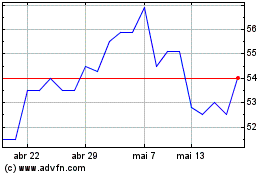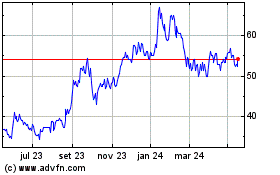TIDMGCL TIDMTTM
RNS Number : 5554E
Geiger Counter Ltd
30 June 2023
30 June 2023
GEIGER COUNTER LIMITED
(THE "COMPANY")
RELEASE OF INTERIM REPORT AND FINANCIAL STATEMENTS
The Directors announce the release of the Interim Report and
Financial Statements for the period ended 31 March 2023, which are
included as an attachment to this announcement.
http://www.rns-pdf.londonstockexchange.com/rns/5554E_1-2023-6-30.pdf
CHAIRMAN'S STATEMENT - FOR THE YEAR ENDED 31 MARCH 2023
Having risen sharply in late 2021 and early 2022 on the back of
climate related government policies that recognised the significant
benefits of nuclear power in order to meet carbon emission goals,
the uranium sector has been more muted over the last 12 months as
high inflation and the resultant higher interest rates have weighed
on investor risk appetites. Uranium equities have not been immune
from the wider market background and despite positive news coming
from the sector in the form of supportive government policies
towards uranium, equities involved in the sector have fallen. The
investment managers report on pages 7 to 8 sets out the investment
position more fully.
The Company's net asset value fell from 47.46p at the start of
the financial year in October 2022 to 41.27p as at 31 March 2023
which is a fall of 13.0% for the six month period. The share price
fell from 46.0p to 36.0p over the same period which represents a
larger decline of 21.7% as the discount to net asset value widened
from 3.1% at the start of the period to 12.9% as at the end of
March 2023.
Share Capital
At the end of April 2023, the second Annual Subscription Right
event took place and I am sorry to report that the net asset value
at that time was substantially below the exercise price of 51.52p
and therefore no new shares were issued. The third Subscription
Right price will be 37.74p per share with the expected date being
30 April 2024.
Outlook
Your Board and the Investment Managers remain confident over the
long-term outlook for uranium. Pro-nuclear government policies have
seen nuclear power being included in most "green" policy frameworks
encouraging wider use. The US has made available zero emission
credits and nuclear deployment incentives to uranium companies and
China is accelerating its new nuclear building programme. In Japan,
higher prices for fossil fuels have increased support to restart
the nation's nuclear fleet. and momentum is gathering pace in this
regard after completion of more stringent reactor upgrades.
Expected demand for uranium is higher than the available supply and
with such structural impetus, we believe the outlook for nuclear
energy is bright.
At the time of writing the Company's net asset value stands at
43.03p and the ordinary share price is 38.00p with the ordinary
shares trading at a discount of 13.2%.
Ian Reeves CBE
Chairman
June 2023
INVESTMENT ADVISER'S REPORT - FOR THE YEAR ENDED 31 MARCH
2023
The six-month period under review has been disappointing for the
Fund, as positive news in the uranium sector has not translated
into gains in the price of equities involved in developing and
producing uranium. The net asset value has declined by 13% over the
six months to 31st March 2023. The positive news we refer to is the
increasing number of longer-term contracts that have been signed to
deliver U3O8 to reactors worldwide. We have also seen China
planning to accelerate its new reactor programme and both France
and Japan commit to extend the life of their nuclear fleet and add
capacity. At the end of 2022 the US signed several long-term
contracts with several US based uranium companies to supply the
newly formed US strategic reserves. Despite this improving
background the largest stocks held within the Fund are all showing
a negative return over the six months - prices started 2023 on an
upwards path but uranium equities were caught up in the poor
broader market sentiment in February and March following weakness
in the US banking sector.
Shift in opinion underpins nuclear power's structural
recovery
Nuclear energy has seen a shift in attitudes to embrace it. The
introduction of pro-nuclear government policies alongside this,
underpins an incredibly appealing outlook for the nuclear sector's
structural recovery, which is still only in its early stages.
Furthermore, with related equities caught-up in broader
recessionary sentiment it appears an opportune time to invest.
Nuclear power has now been included in most "green" policy
frameworks encouraging wider use. In the US, currently the largest
nuclear power market, zero emission credits and nuclear deployment
incentives are now available to utilities under the Inflation
Reduction Act, aimed at reducing US emissions by 40% within this
decade. This builds on the Civil Nuclear Credit Program and
legislation to fund a strategic fuel inventory. Similarly, nuclear
power has been included in the EU taxonomy to improve its green
credentials. Meanwhile in Japan, recent surveys show popular
support to restart the nation's nuclear fleet and momentum is
gathering pace in this regard after completion of more stringent
reactor upgrades.
Demand outstripping supply
Crucially, acknowledgment of the ability of reactors to operate
safely for significantly longer than initially expected has allowed
planned reactor decommissioning to be deferred. Typically adding
around 20 years to the operating life, such extensions have
instantly boosted fuel demand expectations. More significantly new
reactors require around 3 times this quantity of fuel for an
initial charge and with 59 reactors currently under construction
and a further 100 planned, underlying uranium demand is expected to
rise by over 50Mlbs (>3% pa) by the end of the decade. Ambitious
roll-out plans in developing nations will sustain momentum beyond
this timeframe. Commissioning around 8 reactors a year, China is on
course to supplant the US as the largest nuclear fuel consumer
before 2030, while longer-term plans to build another 150 new
domestic reactors by 2035 will see construction accelerate.
Standardisation of small modular reactor designs, to reduce upfront
reactor build costs, is increasingly appealing and should also
accelerate industry growth.
On the supply side, output from the restart of previously
mothballed mines has already been absorbed by the market and
further greenfield supply will be required to satisfy the widening
deficit. As highlighted by Athabasca producer Cameco and developer
Nexgen, at least 2-3 more Cigar Lake or Arrow sized and
geologically scarce deposits will be required to meet end-of-decade
demand. There is mounting pressure to address the future deficit. A
further step up in price from current levels will be needed to
incentivise this.
In addition, there is a need to insure against supply disruption
given highly concentrated fuel production. Notwithstanding
potential shocks resulting from operational issues, such as the
2007 Cigar Lake mine flood, the recent energy crisis highlighted an
over-reliance on Russia and Kazakh origin fuel by established
markets. Akin to OPEC, Kazakhstan and Russia each control over 40%
of global uranium mining and enrichment respectively.
While there are no formal sanctions against using fuel sourced
from these regions, governments and utilities are increasingly
aware of their need to diversify supply. US legislation to
establish a strategic reserve is a prime case in point and no
wonder given that nuclear power will represent 20-25% of these
nation's electricity. This matches the situation in Japan.
Alleviating bottlenecks may spur activity
Consideration also needs to be given to other factors that could
spur activity. Notably, downstream bottlenecks in the fuel cycle,
particularly conversion, in which uranium is converted from a solid
"yellowcake" form into a gaseous "hexafluoride" state, are now
being addressed. The ramp-up of facilities in France and the US are
crucial to increase capacity of this conversion process step, a
necessary precursor to enrichment and then fabrication. Further
capacity expansion will be required beyond this. The scheduled
return of 20% of France's nuclear capacity, after a further round
of safety system checks is completed later this year, is an
additional positive driver of the need to create capacity in the
fuel cycle.
Outlook
In summary, we believe the improving demand backdrop and limited
development of new uranium supply continues to support the sector
outlook, as illustrated by revised government policies to encourage
a greater contribution from nuclear power in the energy mix.
For further information, please contact:
Craig Cleland - CQS (UK) LLP - 020 7201 5368
Jane De Barros-Sousa - R&H Fund Services (Jersey) Limited -
01534 825 259
This information is provided by RNS, the news service of the
London Stock Exchange. RNS is approved by the Financial Conduct
Authority to act as a Primary Information Provider in the United
Kingdom. Terms and conditions relating to the use and distribution
of this information may apply. For further information, please
contact rns@lseg.com or visit www.rns.com.
RNS may use your IP address to confirm compliance with the terms
and conditions, to analyse how you engage with the information
contained in this communication, and to share such analysis on an
anonymised basis with others as part of our commercial services.
For further information about how RNS and the London Stock Exchange
use the personal data you provide us, please see our Privacy
Policy.
END
DOCWPUWGQUPWUBU
(END) Dow Jones Newswires
June 30, 2023 05:30 ET (09:30 GMT)
Geiger Counter (LSE:GCL)
Gráfico Histórico do Ativo
De Abr 2024 até Mai 2024

Geiger Counter (LSE:GCL)
Gráfico Histórico do Ativo
De Mai 2023 até Mai 2024
